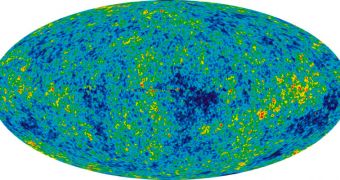Physicists have now proposed a new theory seeking to determine how the early Universe may have looked like, shortly after the Big Bang. They say that it may have taken on the appearance of a single line of pure energy, rather than that of a sphere or a bell.
The new view comes as a breath of fresh air for experts working in the world of high energy physics. For them, an average day of work involves thinking in numerous dimensions, in addition to the four we all experience all the time.
Past studies seeking to determine what happened shortly after the Big Bang indicated either that the Cosmos developed with more dimensions than it had today – but lost them as it cooled – or with less dimensions, which were later augmented as the Universe grew larger.
The new proposal is a part of the latter category. It states that the Cosmos had a single dimension when it first appeared, and experts believe that this goes a long way towards explaining why everything around us today looks the way it does.
According to experts, the 1D Universe evolved when the line began criss-crossing itself. If we imagine this from a distance, it's easy to notice the emergence of a plane, which basically represents the second dimension of the Cosmos.
The exact same thing happened when the third dimension was created. When the 2D plane started to twist around, it intersected itself at some point, and created the 3D scaffolding observable today.
Though this idea is not at all new, the international scientific community has only begun taking it seriously in the past few months. Experts say that the concept is referred to as vanishing dimensions, referring to the fact that dimensions apparently disappear the further we look back in spacetime.
“In the last 30 years, [physicists] were trying to make our theories more complicated by introducing more particles, more dimensions,” explains University of Buffalo physicist Dejan Stojkovic, quoted by Space.
“We decided to go the other way and make theories less complicated in the high energy realm. At high energy [in the early Universe], we are changing the background on which the standard model of particle physics is formulated. In 1D, the problem greatly simplifies,” he goes on to say.
The expert adds that if the idea is proved, then it would connect general relativity and quantum mechanics through a very elegant link. In addition, numerous properties of the Higgs boson – the particle that allows energy to acquire mass – will make more sense as well.
“In 1D, there's a new sense of unification. Right now, you see the diverse world because you're in 3D. When you go down to 1D, things become much simpler,” Stojkovic explains further
“Properties that distinguish all the different particles don't exist anymore, so they all become alike. There is no rotation. All you have is forward and backward, and energy moving in either direction,” he concludes.

 14 DAY TRIAL //
14 DAY TRIAL //